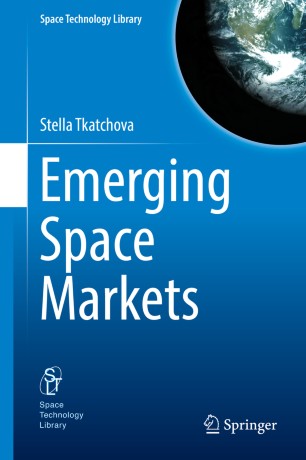Emerging Space Markets

Public space travel or space tourism might be closer than we think. Earlier this year English business magnate Richard Branson and America entrepreneur Jeff Bezos, both founders of their respective commercial space travel companies Virgin Galactic and Blue Origin, launched their private rockets and travelled to the Kármán Line, the boundary between Earth's atmosphere and outer space.
Virgin Galactic is planning to start its first commercial space flights in early 2022 and has, according to media reports, already 600 active reservations. Blue Origin is already planning to execute two more commercial flights this year. And then there is Elon Musk, founder of the private spaceflight company SpaceX who is developing Starship, a rocket and space craft with enough space to fly 100 people to Mars. His dream is to establish human settlements on the Red Planet and lead the way to humanity becoming a multi-planet species.
Travelling into space has fascinated humankind over centuries. Soviet cosmonaut Yuri Alekseyevich was the first human to travel into space on 12th April 1961 on board of the spacecraft Vostok 1. Only eight years later, Neil Armstrong become the first human to set foot on the moon.
Since then space travel has come a long way, but the idea of commercialising space travel is not new. In 1991, Japanese journalist Toyohiro Akiyama spent seven days at the Russian Mir space station as part of a commercially sponsored and funded space mission. The idea of organised space tourism emerged in 2001, but back then it wasn’t considered as a serious and approachable thing to do, explains Dr. Stella Tkatchova, project manager for a Belgian space company and author of the book Emerging Space Markets. Only a few visionaries saw the long-term potential of commercialising space stations because of its high maintenance cost, remembers Tkatchova who previously worked as a project manager on long-term research innovation for the European Commission.
Space stations were originally built for scientific purposes and contained facilities for researchers and scientists. The idea was to attract biotech pharmaceutical companies as well as other organizations to finance their own experiments to fly to a space station. This would have meant that NASA or the International Space Station would become facilitators that would operate the infrastructure, meaning the space station. 'There was a high expectation. Everyone thought there would be a huge number of customers running to fly their own payloads. But then they realised that a lot of companies didn’t understand the benefits of the microgravity environment and they didn’t see the need to use of R&D budgets for gravity research,' explains Tkatchova.
Historically, governmental and commercial agencies were supporting and progressing space travel and exploration. Space agencies would announce opportunities and space companies would bid for contracts and do the manufacturing. All technology and appliances were always produced for only one space mission. Today there are a lot of public private partnerships combining financial resources of industry and the public sector. This is pushing the industry to tap into new markets and attract new customers. These markets were created 20 years ago, but back then they lacked profits. 'Now, we have companies such as for example Seraphim Investment, who invest in space technology, because they realised there is actually much more growth in the investment or upstream applications as well as space tourism launching supply,' says Tkatchova. These companies follow a different business model and don’t just focus on technology. They have also started to compete with each other and have reduced the number of supplier to bring down costs. But there are also other lucrative markets connected to the space industry, such as space debris removal services, or satellite servicing companies, which refuel or repair space satellites while in orbit. According to a report from Northern Sky Research this could become a $3.2 billion market opportunity by 2030.
But when will space travel become more commercial? Well, there have been several attempts already. Between 2001 and 2009, the Russian Soyuz spacecraft undertook eight flights with a total of seven space tourists to the International Space Station. Afterwards orbital space flights were halted but recently NASA announced that the organization will allow up to two short duration private astronaut missions per year to the International Space Station starting in 2022. In what way this initiative will drive space tourism remains to be seen.
You can listen to Dr. Stella Tkatchova’s podcast series on Emerging Space Markets and access other space related content resources including research highlights and videos here.






